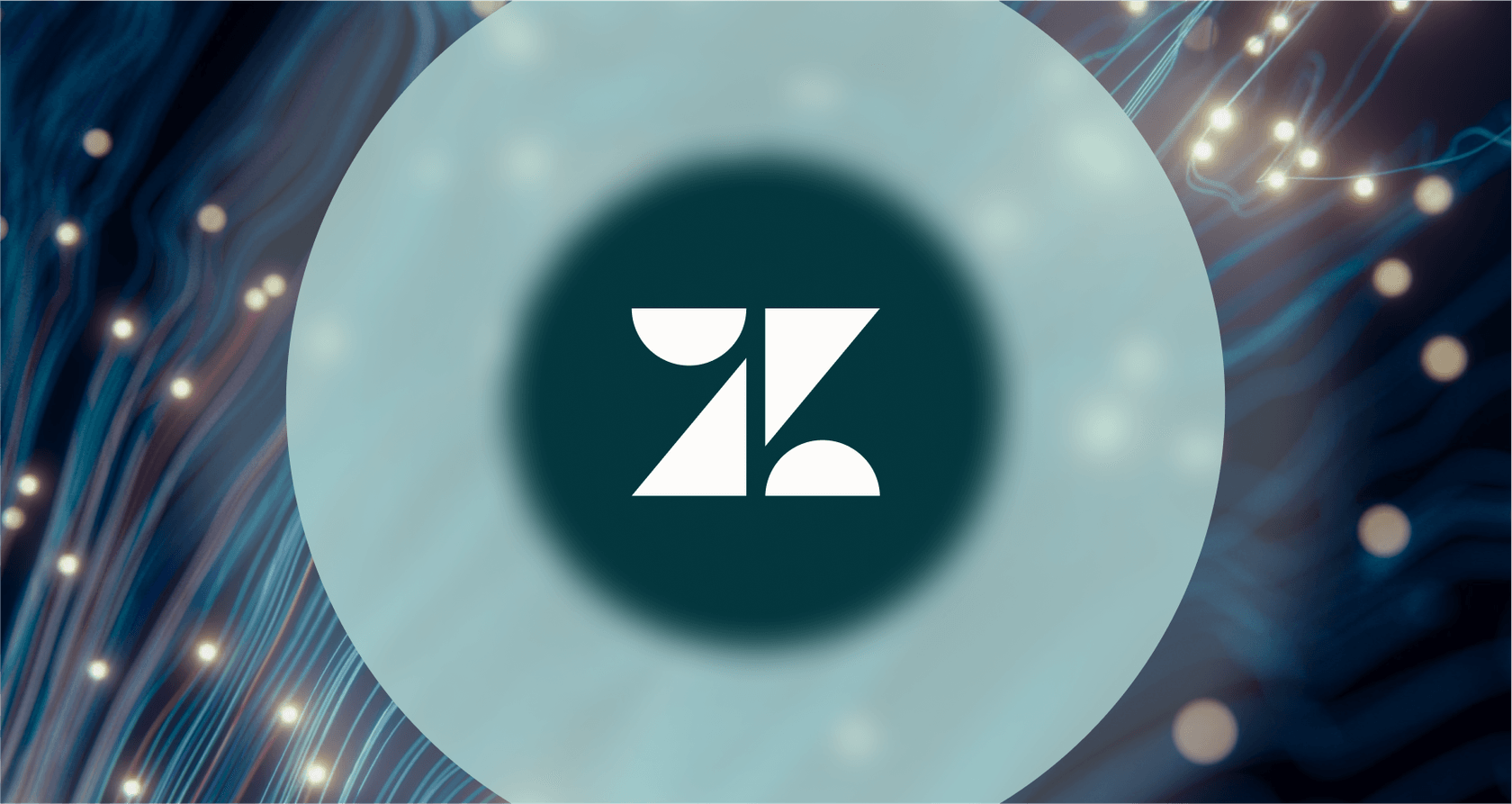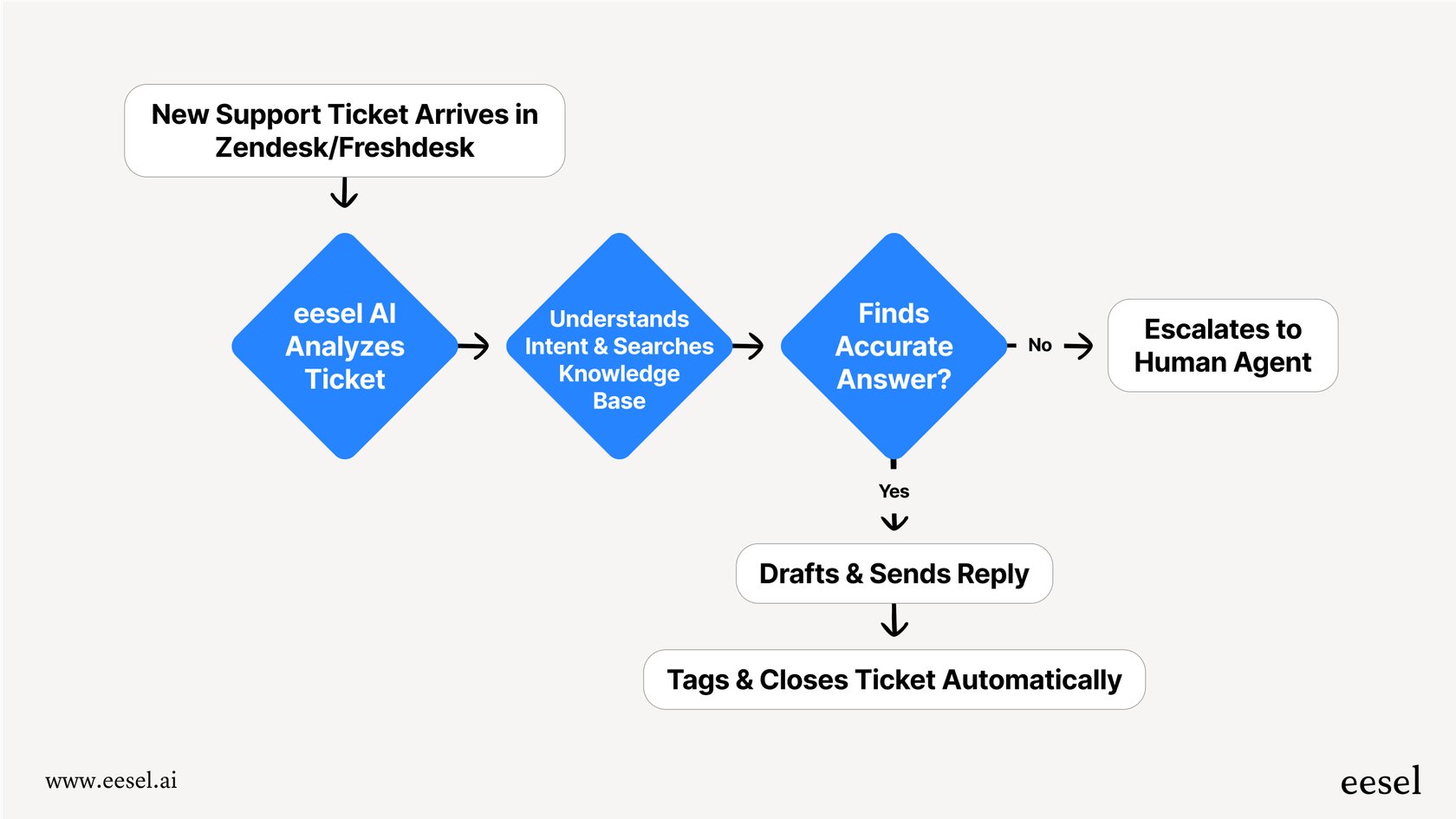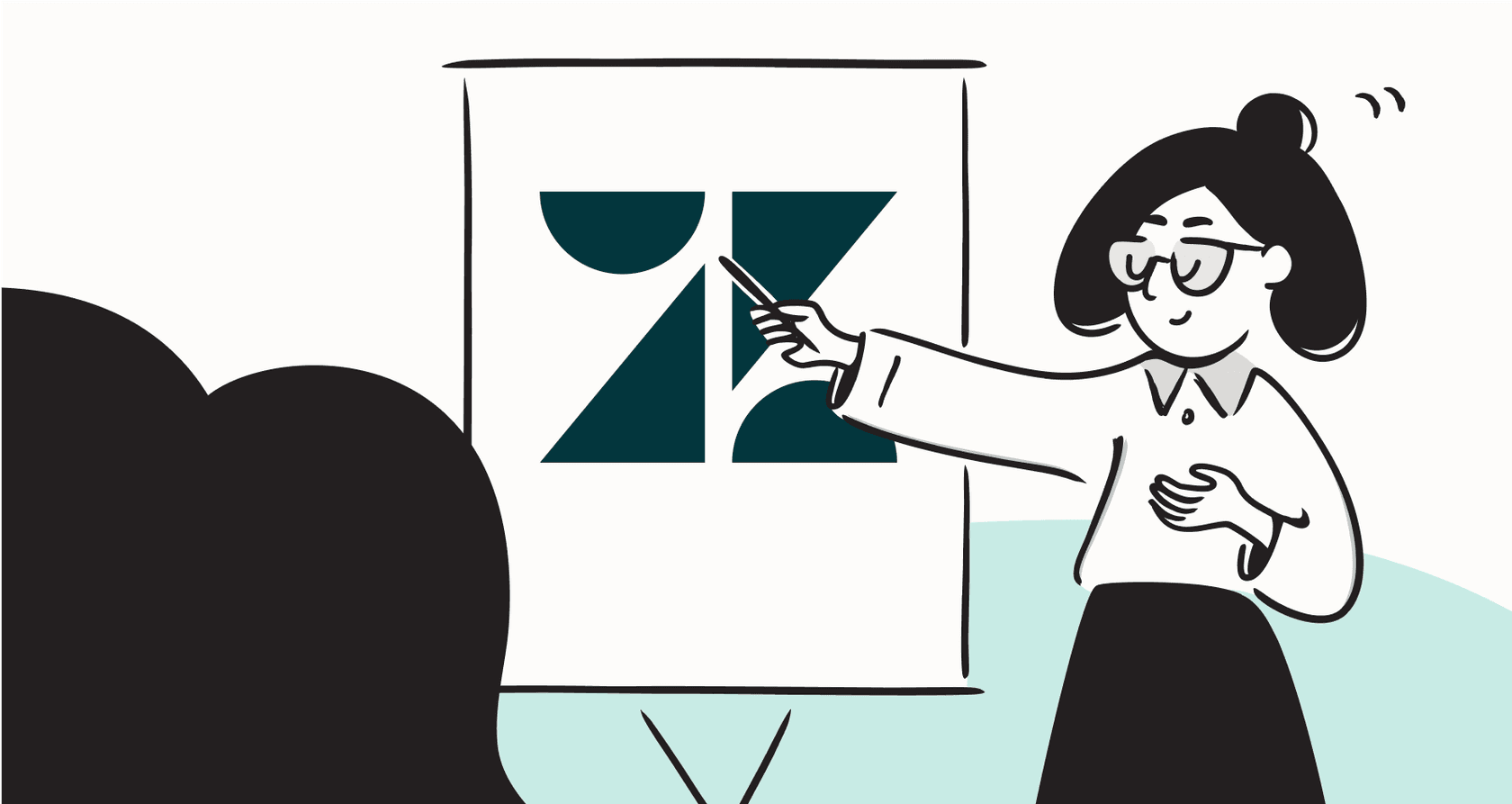A practical guide to the Zendesk AI copilot: Features, pricing, and limitations

Kenneth Pangan

Amogh Sarda
Last edited October 2, 2025
Expert Verified

The race to jam AI into every customer service tool is on, and for good reason. These AI-powered assistants, or "copilots," promise to make support agents faster, smarter, and more efficient. But as many teams are finding out, not all AI tools are the same, and trying to bolt one onto your workflow can be a lot more complicated (and expensive) than the shiny marketing materials let on.
That brings us to the Zendesk AI copilot. It’s a powerful tool built right into the Zendesk world, but is it the right move for your team? This guide gives you a clear, no-fluff look at what it does, what it really costs, and the common headaches you might run into. The goal is to help you make a smart decision for your business, not just the one that’s getting the most hype.
What is the Zendesk AI copilot?
The Zendesk AI copilot is an assistant tool made to work alongside your human support team right inside the Zendesk platform. Think of it less like a robot that talks to customers on its own and more like a helpful sidekick whispering suggestions in your agent’s ear. Its main job is to help agents get more done by suggesting replies, summarizing ticket histories, and taking care of some of the repetitive, manual tasks that eat up their day.
It’s really important to know that the Copilot isn’t something you can just buy on its own. It’s an add-on that you have to purchase on top of an existing Zendesk Suite plan. This is a huge detail because it completely changes the total cost and who can actually afford it, which we’ll get into in just a bit.
A deep dive into Zendesk AI copilot features
Zendesk’s copilot is packed with features designed to make an agent’s life easier from the moment a ticket lands in their queue. Here’s a look at what it can do.
Figuring out what the customer wants (and feels)
Before an agent even types a word, the copilot is already analyzing incoming tickets. It uses AI to figure out the customer’s intent, language, and sentiment (if they’re happy or angry). This initial scan powers a few handy features:
-
Ticket summaries: We’ve all seen those long, winding email chains. This feature gives agents a quick summary of the conversation so far, so they don’t have to read every single message. It’s a real time-saver, especially when a ticket gets passed from one agent to another.
-
Similar tickets and merging: The copilot can dig up previously solved tickets that look like the current one, giving agents a ready-made recipe for how to solve the problem. It also points out duplicate tickets from the same customer, helping to keep the queue tidy.
Getting help with replies and actions
Once an agent knows what’s on, the copilot helps them write the perfect response and get things done faster.
-
Auto assist: This feature looks at the ticket and proactively suggests what to do next, like applying a certain macro or updating ticket fields. The agent just has to click to approve it.
-
Suggested first replies: Using generative AI, the copilot can draft the first response by looking at your macros and help center articles. It helps agents kick off the conversation without starting from scratch.
-
Enhance writing: If an agent has written a rough draft, they can use the copilot to polish it. It can turn a few bullet points into a full paragraph or tweak the tone to be a bit more formal or friendly.
Step-by-step guidance and automation
For more complicated, multi-step tasks, you can set up the Zendesk AI copilot with "procedures." These are basically step-by-step guides that the AI uses to walk an agent through a specific process, like how to issue a refund through a Shopify integration.
While this can be incredibly useful for making sure everyone follows the same process, it also highlights one of the tool’s biggest downsides: the setup is a pain. An admin has to sit down and manually build each and every one of these procedures. For teams that just want to get started quickly, this can be a major roadblock. While Zendesk makes you build these flows from scratch, other tools like eesel AI can learn directly from your past tickets to suggest entire workflows automatically, which cuts way down on the manual setup time.
 This workflow diagram illustrates how a tool like eesel AI can automatically analyze tickets and suggest resolutions, reducing manual setup.
This workflow diagram illustrates how a tool like eesel AI can automatically analyze tickets and suggest resolutions, reducing manual setup.The real cost of the Zendesk AI copilot: A complete pricing breakdown
Cost is easily one of the biggest concerns for teams looking at the Zendesk AI copilot. If you browse through user reviews, you’ll see people saying the pricing is not only high but also confusing and unpredictable. The final price you pay isn’t a single number; it’s a stack of costs that includes your base plan, the copilot add-on, and sometimes, fees based on how much you use it.
Let’s unpack it all.
Step 1: Choosing a Zendesk Suite plan
First things first, you need a Zendesk Suite subscription. The AI features aren’t available on the basic "Support Team" plan, so you have to start with at least the "Suite Team" plan.
Here are the annual prices as of late 2024, which form the base of your bill.
| Plan | Annual Price (per agent/month) | Key AI-Related Features |
|---|---|---|
| Suite Team | $55 | AI Agents (Essential), Generative Replies |
| Suite Professional | $115 | Everything in Team + CSAT, Skills-based routing |
| Suite Enterprise | $169 | Everything in Pro + Custom Roles, Sandbox |
This per-agent fee is just the starting point.
Step 2: Adding the Zendesk AI copilot add-on
On top of your Suite plan, you have to buy the Copilot add-on. Zendesk doesn’t list this price on their public pricing page, but partners and users often report it costs an extra $50 per agent, per month.
This is where the math gets serious. The cost is per agent. So for a team of 10 agents on the Suite Professional plan ($115/agent), adding Copilot would tack on another $500 to their monthly bill. That brings the total to $1,650 per month before you even factor in usage fees. For larger teams, this can get out of hand very quickly.
Step 3: Understanding Zendesk AI copilot automated resolution pricing
This is where the costs can really become a guessing game. Zendesk’s AI Agents, which are tied to the copilot, work on a pay-per-resolution model. While each plan comes with a few "automated resolutions" (ARs) per agent, you have to pay for any that go over that limit.
The pay-as-you-go rate is usually around $1.50 to $2.00 for each resolution. As one user on Reddit pointed out, this model can feel like you’re being punished. If your AI does a great job and automates a ton of tickets during a busy month, you get hit with a surprisingly large bill. You end up paying more because the tool is working well, which makes budgeting a complete nightmare.
A simpler, more predictable alternative
Compared to Zendesk’s complicated, multi-layered model, some platforms take a much clearer and more predictable route. For instance, eesel AI’s pricing is designed to be straightforward.
-
No per-resolution fees: eesel AI plans are based on a set monthly volume of AI interactions. You know exactly what you’re paying for, so a busy month won’t result in a bill that makes your eyes water.
-
All features included: Key tools like AI Agent, Copilot, and AI Triage come with every plan. You don’t have to worry about useful features being locked away in expensive, separate add-ons.
-
Flexible plans: You can start on a month-to-month plan and cancel anytime. This gives you a low-risk way to try out the platform and see its value before you have to sign a long-term contract.
 A screenshot of eesel AI's pricing page, showing a clear, predictable pricing model as an alternative to the Zendesk AI copilot.
A screenshot of eesel AI's pricing page, showing a clear, predictable pricing model as an alternative to the Zendesk AI copilot.Common challenges of implementing the Zendesk AI copilot
Beyond the price tag, teams often run into practical issues when trying to get the Zendesk AI copilot working well. Feedback from people using it in the real world points to a few common themes.
-
It takes a long time to learn and set up: People consistently say that building flows, creating procedures, and getting the knowledge base ready for the AI is a huge time-sink. It often requires one person on the team to become a dedicated manager for the tool, which is another hidden cost to consider.
-
Experienced agents might find it annoying: Not everyone is a fan of the AI’s "help." A common complaint is that senior agents, who already have their own fast workflows with macros and shortcuts, find the copilot’s pop-up suggestions distracting. For them, it can actually slow things down instead of speeding them up.
-
It might not work well at first: The copilot relies heavily on the quality of your existing knowledge. If your help center isn’t in good shape or the pre-built intents don’t fit your business, the AI’s suggestions can be off-topic or just plain wrong. That leads to a lot of frustration for your agents.
Sidestepping these challenges
These problems aren’t impossible to solve, but they do call for a different way of thinking about AI. This is where a platform like eesel AI really shines, because it’s built to tackle these exact issues.
-
Go live in minutes, not months: eesel AI is completely self-serve. You can connect your helpdesk, train the AI on your knowledge sources, and get it running without ever having to talk to a salesperson.
-
Test it on old tickets first: This is a huge one. eesel AI lets you run a simulation on thousands of your past tickets in a safe environment. You can see exactly how it would have responded, get a forecast of your automation rate, and find gaps in your knowledge before you ever let it near your agents or customers.
-
Use automation where it makes sense: Instead of forcing the copilot on your entire team, eesel AI gives you fine-tuned control. You can choose to automate only certain types of simple, repetitive tickets. This lets you support your newer agents and cut down on the easy T1 workload without messing up the flow of your senior team.
This video provides an overview of whether the Zendesk Agent Copilot is worth the investment for enhancing agent productivity.
Is the Zendesk AI copilot right for you?
The Zendesk AI copilot is a deeply integrated and feature-rich tool that can definitely bring value if you’re already all-in on its ecosystem. But it comes with a high, complicated price and requires a serious investment in setup, training, and upkeep.
It might be a good fit for huge, enterprise-level companies with a lot of agent turnover. In that case, the benefits of standardizing processes and getting new hires up to speed faster might be worth the cost.
But for most teams, especially those who value flexibility, clear pricing, and a fast, low-risk setup, it might not be the best choice. The long learning curve, the risk of annoying your best agents, and the unpredictable costs are serious drawbacks you can’t really ignore.
If you’re looking for an AI copilot that gives you total control, has predictable costs, and can be up and running in minutes, you should explore eesel AI’s AI Copilot. You can simulate its performance on your own historical data and see the potential return for yourself before you commit to a thing.
Frequently asked questions
The Zendesk AI copilot is an assistant tool built into the Zendesk platform to help human support agents. It primarily suggests replies, summarizes ticket histories, and automates repetitive tasks to increase agent efficiency, acting more like a helpful sidekick.
The Zendesk AI copilot is an add-on to an existing Zendesk Suite plan, typically costing an extra $50 per agent, per month. Beyond this, there are pay-per-resolution fees for automated tickets, usually ranging from $1.50 to $2.00 per resolution, which can make budgeting unpredictable.
Teams often find the Zendesk AI copilot takes a significant amount of time to learn and set up, requiring manual creation of procedures and thorough content preparation. Experienced agents may also find its pop-up suggestions distracting, potentially slowing down their existing efficient workflows.
Yes, the Zendesk AI copilot can be configured with "procedures" to guide agents through multi-step tasks, such as issuing a refund through a Shopify integration. However, these procedures must be manually built by an admin.
The Zendesk AI copilot is generally considered a better fit for large, enterprise-level companies with high agent turnover due to its high, complicated pricing and significant setup investment. For most smaller teams valuing flexibility and predictable costs, it might not be the best choice.
The effectiveness of the Zendesk AI copilot relies heavily on the quality of your existing knowledge base and macros. If your help center content is outdated or disorganized, the AI’s suggestions and responses will likely be inaccurate or unhelpful.






